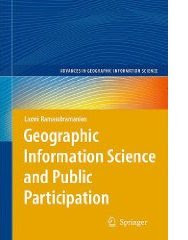PGIS practice is geared towards community empowerment through measured, demand-driven, user-friendly and integrated applications of geo-spatial technologies. GIS-based maps and spatial analysis thus become major conduits in the process. A good PGIS practice is embedded into long-lasting and locally driven spatial decision-making processes, is flexible, adapts to different socio-cultural and bio-physical environments, depends on multidisciplinary facilitation and skills and builds essentially on visual language. If appropriately utilized, the practice should exert profound impacts on community empowerment, innovation and social change. More importantly, by placing control of access and use of culturally sensitive spatial information in the hands of those who generated them, PGIS practice can protect traditional knowledge and wisdom from external exploitation.
Effective participation is the key to good PGIS practice. Whilst the focus of traditional GIS applications is often on the outcome, PGIS initiatives tend to emphasize the processes by which outcomes are attained. At times the participatory process can obfuscate systematic inequalities through unequal and superficial participation. For example, PGIS applications may be used to legitimise decisions which in fact were taken by outsiders. The process can also easily be hijacked by community elites. For PGIS practices to be successful, they must be placed in a well thought out and demand-driven process based on the proactive collaboration of the custodians of local and traditional knowledge and of facilitators skilled in applying PGIS and transferring technical know-how to local actors. Participation thus cuts across the process from gaining a clear understanding of the existing legal and regulatory frameworks, to jointly setting project objectives, defining strategies and choosing appropriate geo-spatial information management tools. The integrated and multifaceted nature of PGIS provides legitimacy for local knowledge and generates a great sense of confidence and pride which prepares participant communities in dealing with outsiders. The process is intended to build self-esteem, raise awareness about pressing issues in the community and produce concrete and sustainable spatial solutions.
Below is the original article published on EJISDC, an open access journal, and translations in French and Spanish done in the context of the development of the "Training Kit on Participatory Spatial Information Managamant and Communication" soon to be published by CTA and IFAD.
- Rambaldi G., Kwaku Kyem A. P.; Mbile P.; McCall M. and Weiner D. 2006. Participatory Spatial Information Management and Communication in Developing Countries. EJISDC 25, 1, 1-9 .
- Rambaldi G., Kwaku Kyem A. P.; Mbile P.; McCall M. and Weiner D. 2006. Gestion Participative de l’information Géographique et de la Communication dans les Pays en Développement. EJISDC 25, 1, 1-9. Traduit et publié par le Centre Technique de Coopération Agricole et Rurale (CTA) avec la permission d’EJISDC
- Rambaldi G., Kwaku Kyem A. P.; Mbile P.; McCall M. and Weiner D. 2006. Manejo y Comunicación de la Información Territorial en Forma Participativa en los Países en vía de Desarrollo. EJISDC 25, 1, 1-9. Traducido y publicado por: Centro Técnico para la Cooperación Agricultural y Rural ACP-EU (CTA), 2010. Con permiso de: EJISDC
Selected publications on the subject are available at www.gis4d.com





